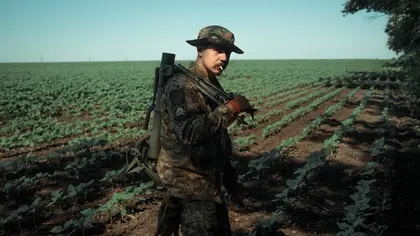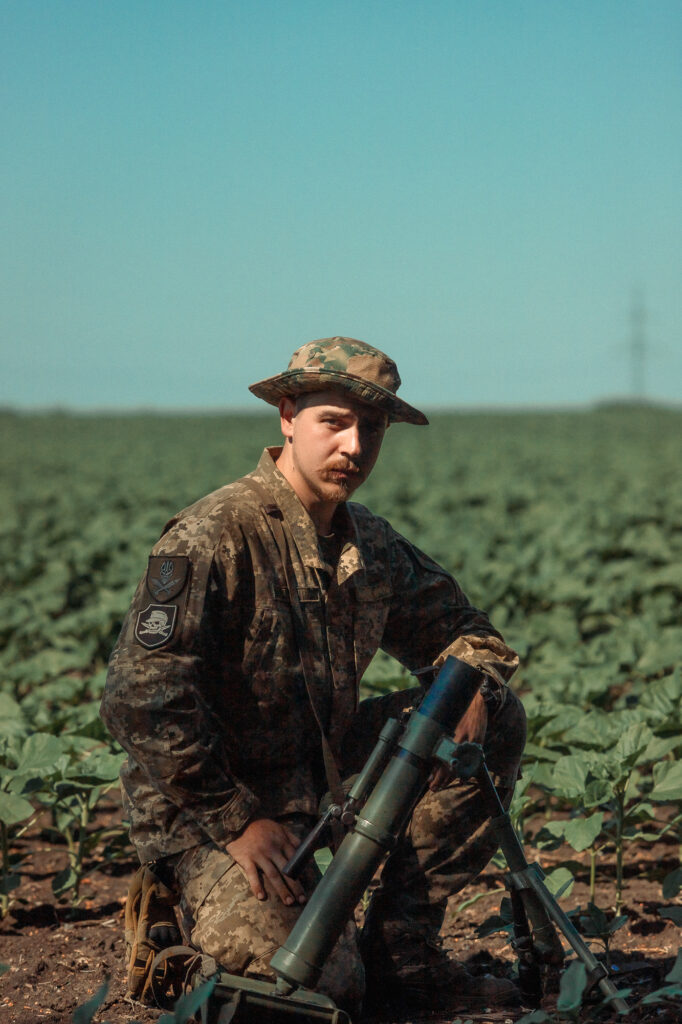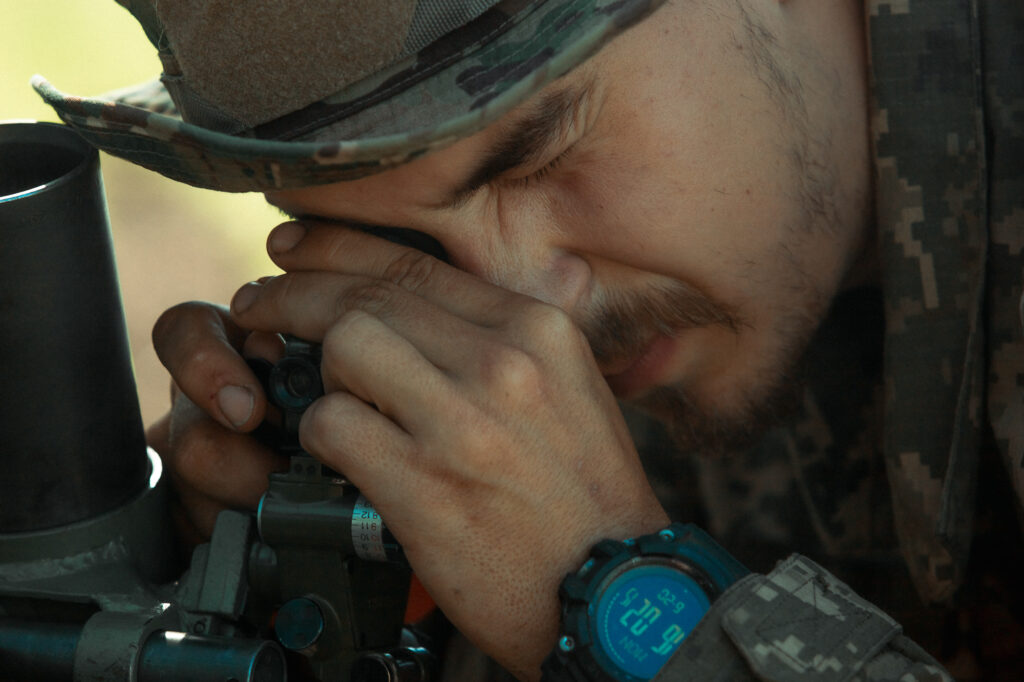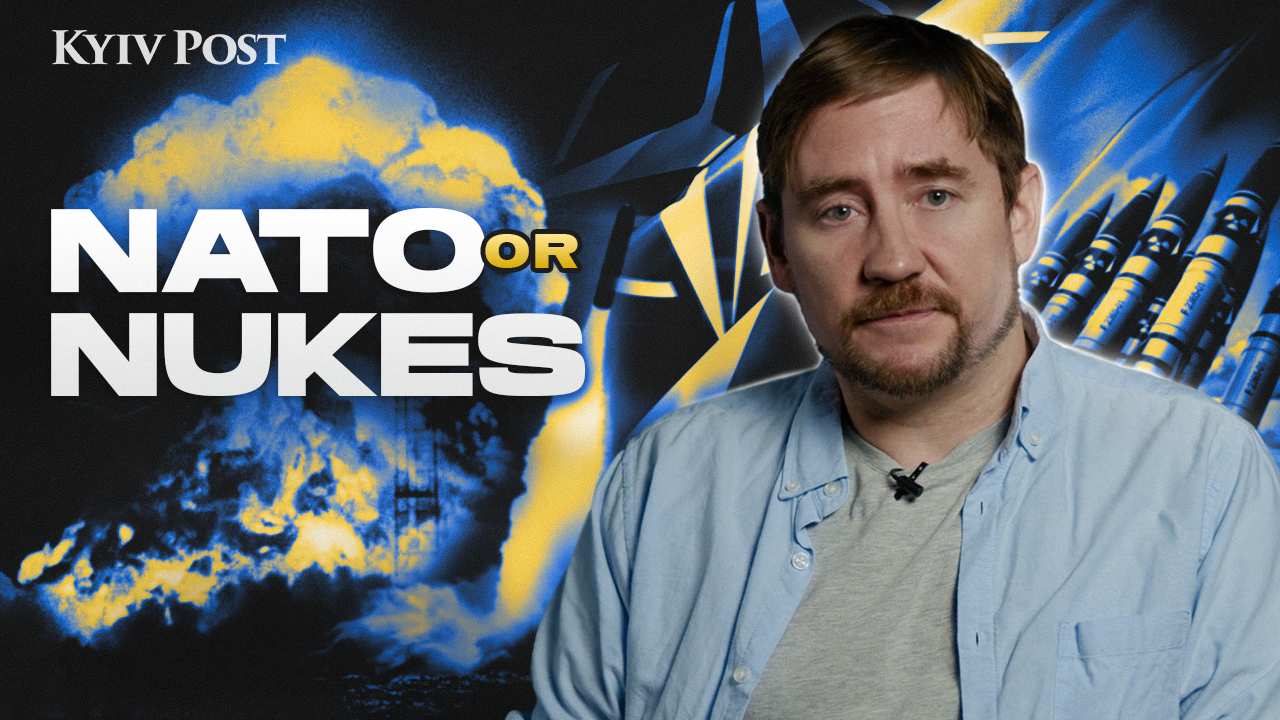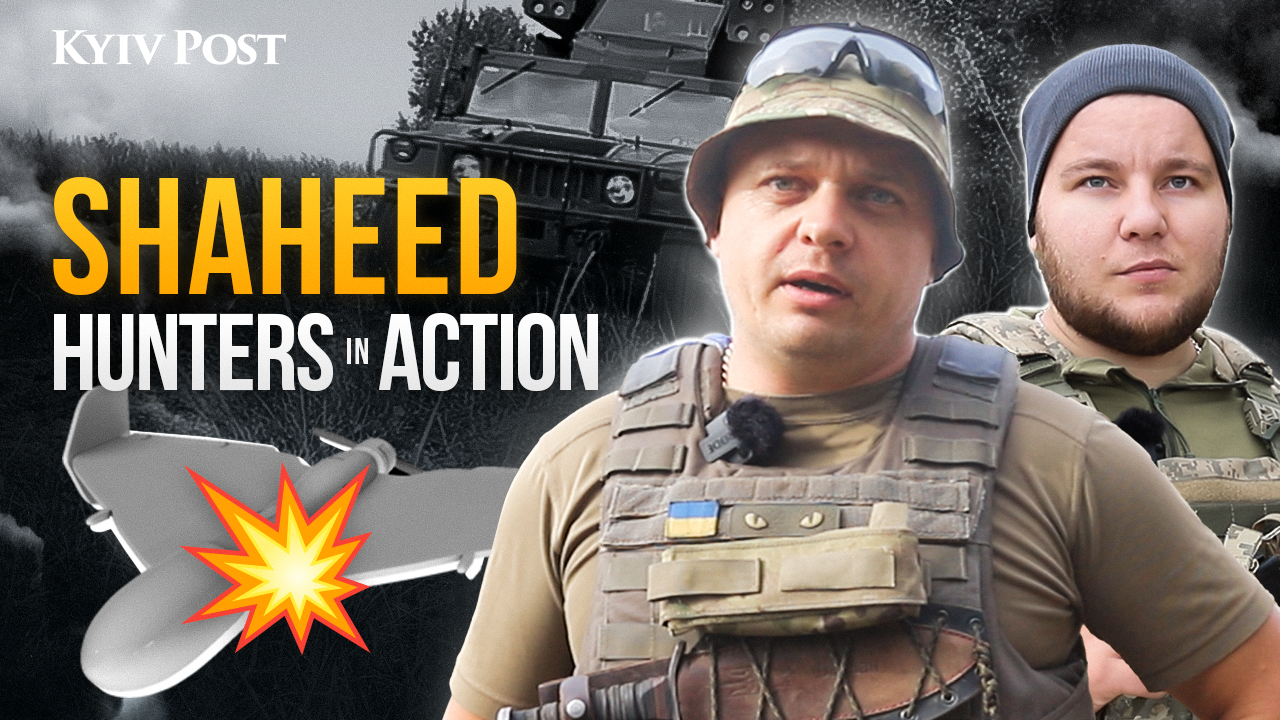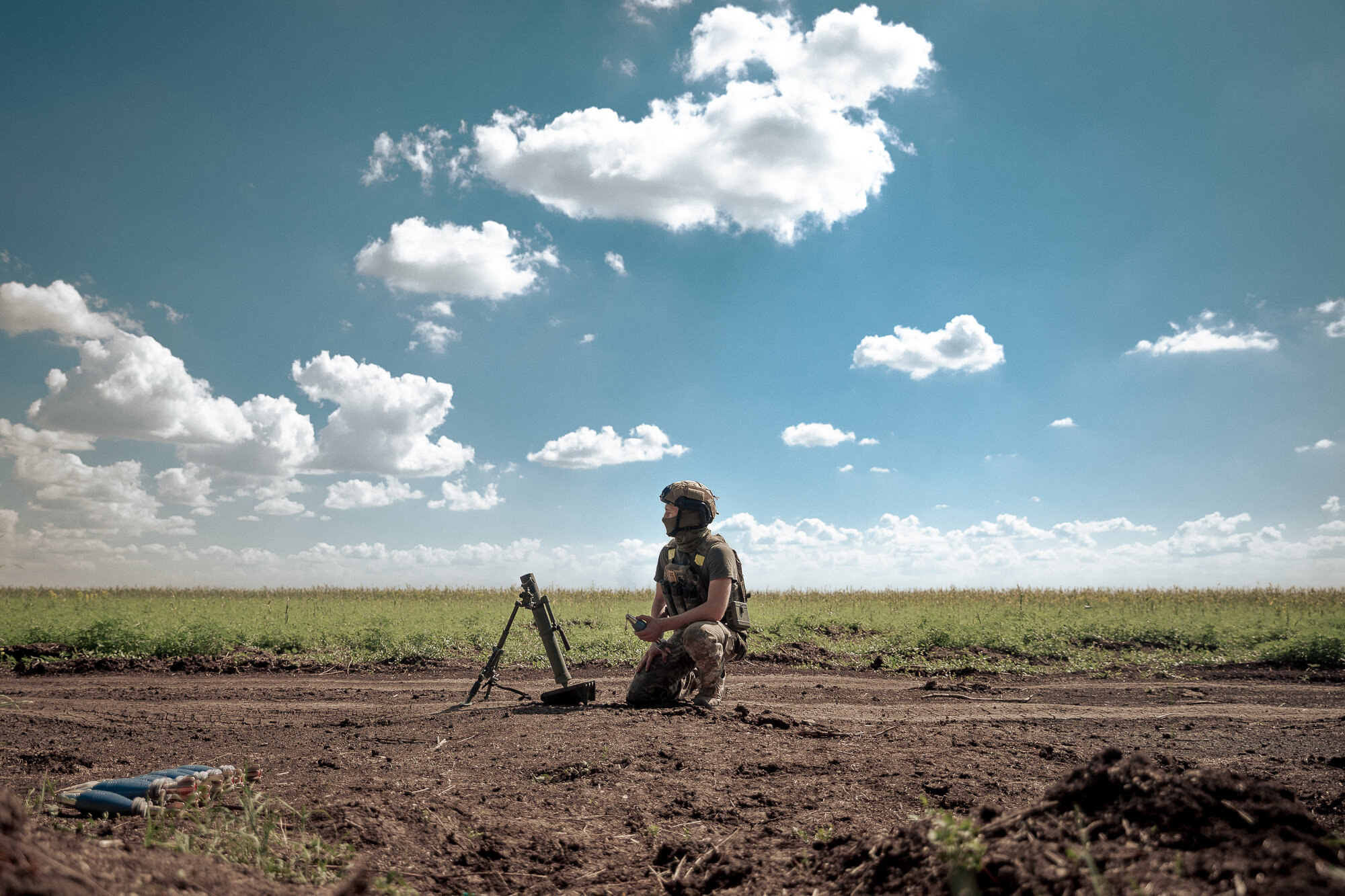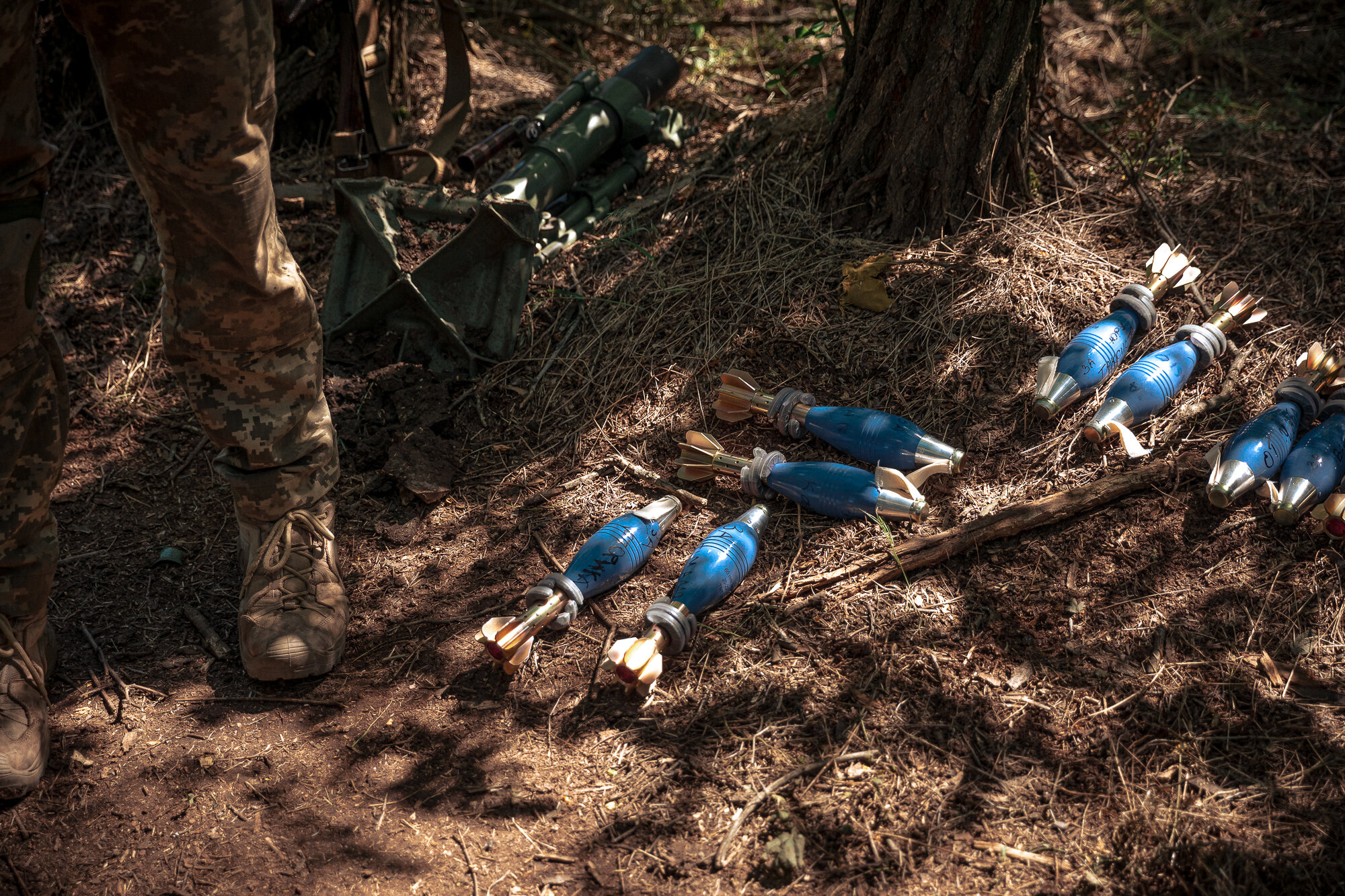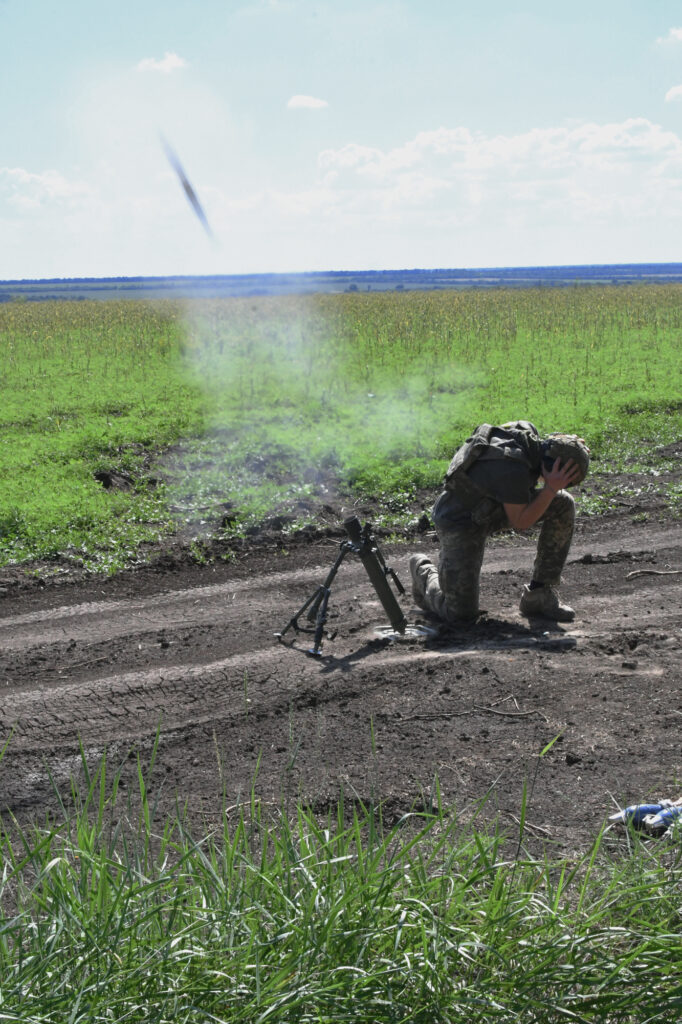Four months ago, Dmytro Stolyarchuk was a recently-graduated student planning to work in the geodesic side of Ukraine’s then-booming construction industry or, maybe, to continue his studies and go into cartography.
Now, as a mortarman in the Azov Special Operations Force (SSO) Regiment, Stolyarchuk’s day-to-day job is dropping steel and explosives on the people that invaded the place he grew up.
JOIN US ON TELEGRAM
Follow our coverage of the war on the @Kyivpost_official.
Stolyarchuk, 22, had a rough start to his war. He grew up in a private home in a leafy bedroom community outside the city Chernihiv, to the north of Kyiv, and in late February squarely in the path of the Russian Federation’s 41st Combined Arms Army, whose mission was to capture the capital.
At the time, Stolyarchuk had already preparing to fight for a couple of weeks. A self-described “Ukrainian patriot”, he was a member of the local chapter of the Azov organization, which for him was a group of mostly young volunteers and political activists pushing for European integration and better government. He joined Azov as a teenager, in 2014, after Russia invaded Donbas.
Stolyarchuk told Kyiv Post he decided he wanted to work to make Ukraine better thanks first to his parents, a factory employee and a teacher, who showed him life only improves with one’s own hard work. He also credits his grandmother, a Chernihiv Region native, who brought him up on stories of family survival through invasion, execution, war and famine.
Russian propaganda platforms often brand Azov an extremist organization and Azov members Fascists and Nazis. Stolyarchuk said he became an activist patriot, in no small part, because of his grandmother’s eyewitness accounts of German invasion and occupation of Ukraine and his family home.
In the weeks leading up to Russia’s invasion, Stolyarchuk’s Azov chapter, a few dozen young men, prepared for the worst, planning escape routes for their families, deciding where the Kremlin forces might be fought, and debating on whether to join the army or become a partisan. His group concluded Kyiv needed defenders, so when the war started he and his mates headed south, away from his family and the Russians. He joined one of the city’s territorial Defense battalions and became one of the hundreds of absolutely untrained fighters handed a Kalashnikov in late February and told to man barricades in Kyiv’s northern outskirts.
Stolyarchuk’s mother, father, girlfriend, siblings and grandmother, meanwhile, saw Russian combat units drive through their village on the third day of the war. By the second week they were hiding in the family home because of the danger of meeting a Russian soldier or patrol on the street. By late March, the Russians shut down the mobile phone network.
A month later the 41st Army left and Stolyarchuk, now a combat veteran with the patriotic war nickname “Прапор” (generally: flag, ensign, banner) was finally able to phone home. The Russians had kidnapped and murdered people in neighboring villages. His family was fine.
The Azov Territorial Defense battalion likewise had transitioned from raw amateurs to a fighting force, having fought off RF armored attacks using rifles, Molotov Cocktails and anti-tank rockets. By April the Ukrainian army re-designated the “Azov” Territorial Defense battalion a Special Operations Force (SSO) infantry unit.
That meant Azov SSO was issued with heavier weapons, and Stolyarchuk volunteered to become a mortarman. Up until that point, the only mortars he had ever seen were ones captured from the Russians.
Since May Stolyarchuk has been part of a 60mm mortar team, with the collective job of dropping high explosive on the enemy, or screening friendly troops with smoke. The most important parts of that work, he said, are physical fitness to carry the steel mortar components and dozens of rounds hundreds of meters, and getting the calculations right – at times when someone is shooting at you – so that the mortar round hits where it needs to.
With practice, he said, a 60mm mortarman can pick out and hit a target as small as an automobile, at a distance of a couple of kilometers. The problem, Stolyarchuk said, is that not all 60mm mortars are equal. The top-of-the-market 60mm mortar is a USA-manufactured weapon called an M224. With baseplate, tube and tripod it weighs about 21 kilos, it shoots about 3.8 kilometers, and it was developed for and battle-tested in Afghanistan.
The Americans make specialized shells for the weapon, some to punch through armor, others to scatter shrapnel, and still others designed to blast objects. According to Stolyarchuk, a few dozen of these weapons have actually reached the hands of the elite UAF commando forces, and are doing good work, sometimes behind enemy lines.
In the rank-and-file Ukrainian army, an even more recently-raised units that started life as armed civilians, soldiers use what they have. In Azov SSO, Stolyarchuk said, mortar sections use a weapon called an M60-16 Kamberton.
This is one of Ukraine’s few post-Soviet weapons, developed as an emergency stopgap mortar after Russia invaded Donbas in 2014, and only in production since 2016. The Kamberton doesn’t shoot quite as far as the American M224 but its main drawback, Stolyarchuk said, is that no matter how skilled a mortarman is, rounds fired from the Ukrainian weapon will wander further and miss more often.
In this war, where the only realistic chance to hurt the enemy is the first one or two rounds after a drone spots him, even the best Ukrainian mortar team, using a Ukrainian-made mortar, will far more likely frighten a Russian invader into hiding than actually hurt him.
In Stolyarchuk’s professional opinion, the simplest way to fix that is issue units like Azov SSO American M224s or something like it, a reasonable complement of short-range drones, and plenty of ammunition.
He still hasn’t seen his family.
NOTE: Kyiv Post journalists researching this were embedded with an infantry company of the Azov Special Operations Forces (SS0) Regiment.
Unit leadership requested some soldier identities and operational details not be made public for security reasons.
You can also highlight the text and press Ctrl + Enter


